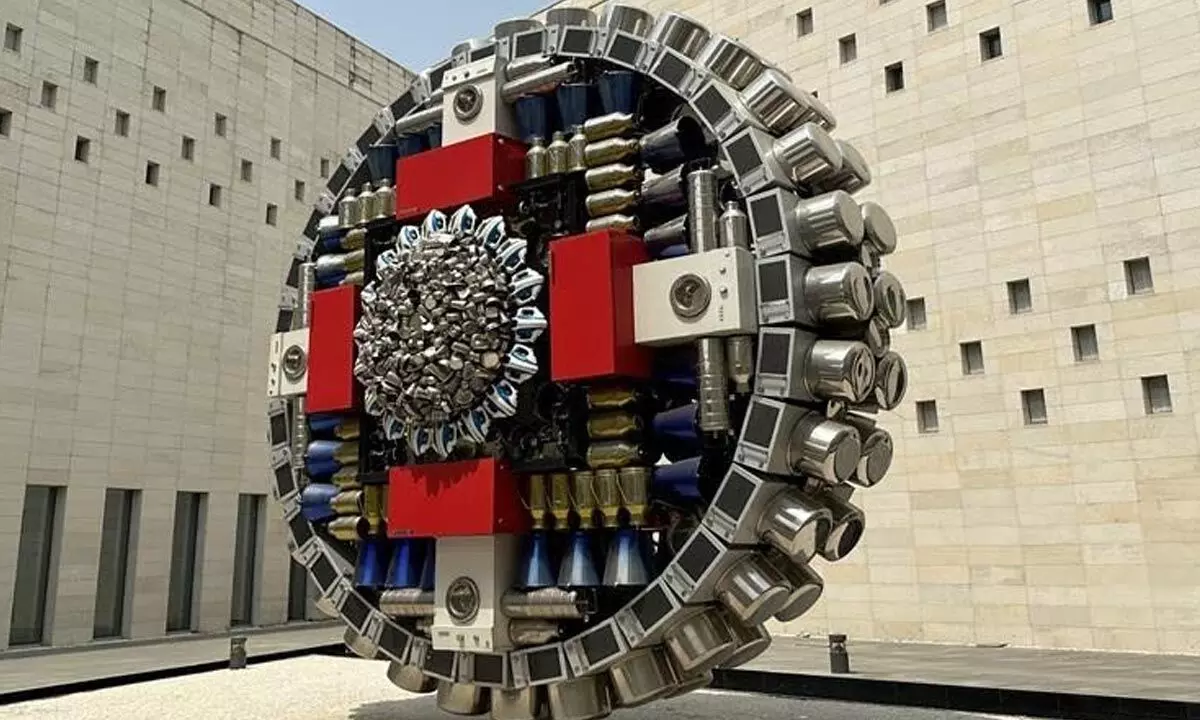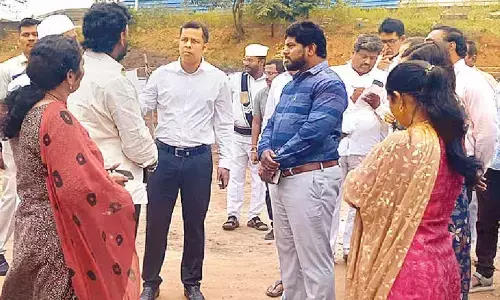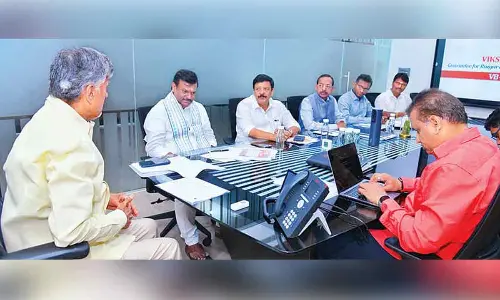The constant in Bihar Museum

Civilization, heritage and technology
There is a certain fluidity about the whole place. It would be a tad unfair to call it a just museum, considering the kind of government museums we have been exposed to. There are seven courtyards that kill 50 percent of the Patna noise, accentuating the reassuring quiet one feels surrounded by its vast collections that span over 10,000 years. That almost addictive quiet.
In a country starved of good museums, where most in different state promise displays in the most boring manner and refuse to incorporate technology for a better immersive and interactive experience, the Bihar Museum in Patna comes almost as a shocker. Defying all stereotypes synonymous with state museums, this one not only reflects the multiple layers of the state’s rich history but does the same in the most interactive and novel ways-- special measures to make the Children’s section more interactive where they can ‘touch’ things, and ensuring that art is ‘democratized.’ And now, it is all set to host the second edition of the Bihar Museum Biennale (opens on August 7), the first-ever Museum Biennale in the country and the world that debuted in March 2021 in a hybrid format providing a gateway to the richness and treasures of Indian museums and also bringing together a highlight of key collections from various museums across the world.
Boasting of artifacts from the Harappan Civilization, the second urbanization, and Haryanka, there are objects from the fourth century BCE to the first century BCE. It has objects spanning three major dynasties of India; the Mauryas, the Nandas and the Shishunagas, the galleries also houses fragments of railings from various ancient Stupas that are carved on with episodes from Buddha's and Mahavira's life.
While the museum was opened completely in 2017, with the Orientation gallery, the Children's gallery, the regional gallery, the Contemporary gallery, the Historical art galleries, the Bihari Diaspora gallery, and the visible storage gallery they offer an in-depth experience with intelligent lighting and minimal furniture, and not just a glimpse into the past.
During the curtain raiser of the Biennale which showcased two photography exhibitions curated by Dr Alka Pande-- Brasilia 60+ and the Construction of Modern Brazil, and ‘Nature Strikes Back: Photographs by Emmanuel Lenain, Ambassador of France to India, Anjani Kumar Singh, Director General of Bihar Museum, retired civil servant from the Bihar cadre, the man responsible for making the museum a reality talked about the museum. Anjani Kumar Singh was responsible for bringing the vision of the Chief Minister.
“We already have the Patna Museum but all the artifacts could not be properly displayed. So, the Chief Minister, Nitish Kumar, and I decided to create a modern and international-level museum. While everybody keeps talking about art and culture in India, is it not surprising that no one has bothered to create a strong and modern museum after independence? When we look at the ones abroad, not only are they extremely thoughtfully designed, there is an ecosystem to support them as well. Yes, we took some strong decisions --demolished a few houses and created a space that was central. A special effort was made to make it ‘relevant’ to the next generation,” says Singh who appointed Japan-based Maki & Associates and its Indian partner OPOLIS, Mumbai as primary consultant architects for the project that can accommodate 10,000 visitors at any given time, after floating an international tender.
Stressing that unlike abroad, in India most museums are only about the building and the collection, and seldom focus on a range of activities, thus alienating the community, Singh opines it is important to ascertain that every kind of person comes to the museum and enjoys it, he adds, “We want people to be happy when they come out of the museum. To do that we need a very interactive approach. Now, we also did a survey with the people who come and mostly after 40 mins, they are bored. We do not want them to come for just one day. If a child is coming, then the guide will also have to dress up in a way and act in a way that is enjoyable for the children and keep them engaged. It makes sense that people look around and read for 40 minutes and click selfies for 20, not the other way around.”
Singh smiles that he mostly focuses on the “bad reviews” on Google given by visitors when it comes to feedback. “Like, some people pointed out that the museum closes too soon, and considering the weather, the timings should be changed. We did that immediately.”
Even as one looks at the huge installation by superstar Indian artist Subodh Gupta at the museum, he says that while several important major artists have left the state, many are still here. “And a lot of them have not exhibited in their entire life. So, we curated an exhibition for them, and many works were sold. Slowly, a lot of the artists are being documented here.”
Not in favour of freebies, the DG, who has priced the museum ticket at Rs 100 says that the general public has never raised a question about that. “People come as they appreciate what they are seeing. By the way, a major part of our budget goes into maintenance and cleanliness. When you create the benchmark, you just can’t afford to slip.”
















